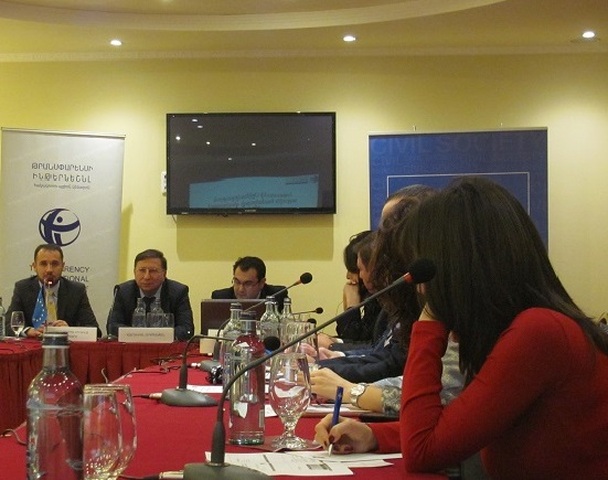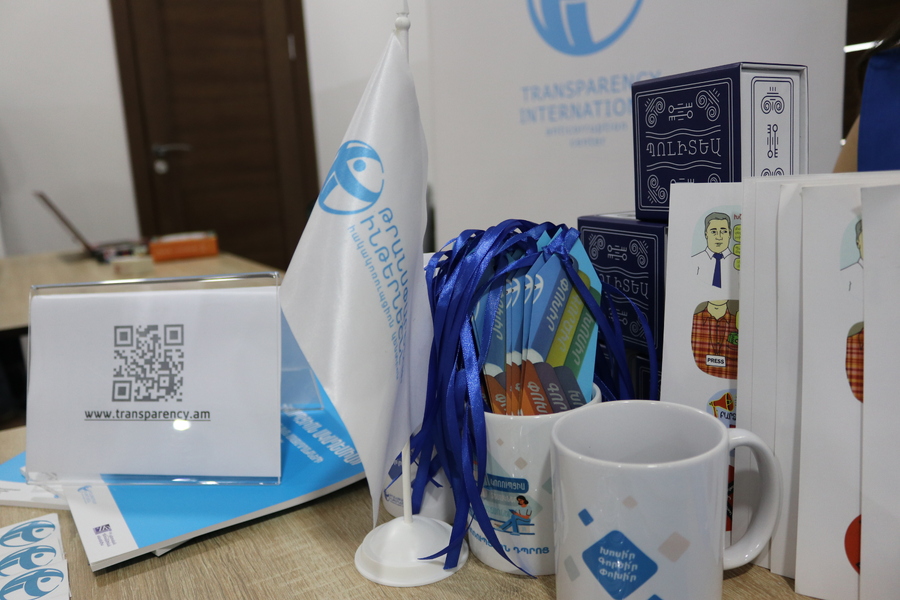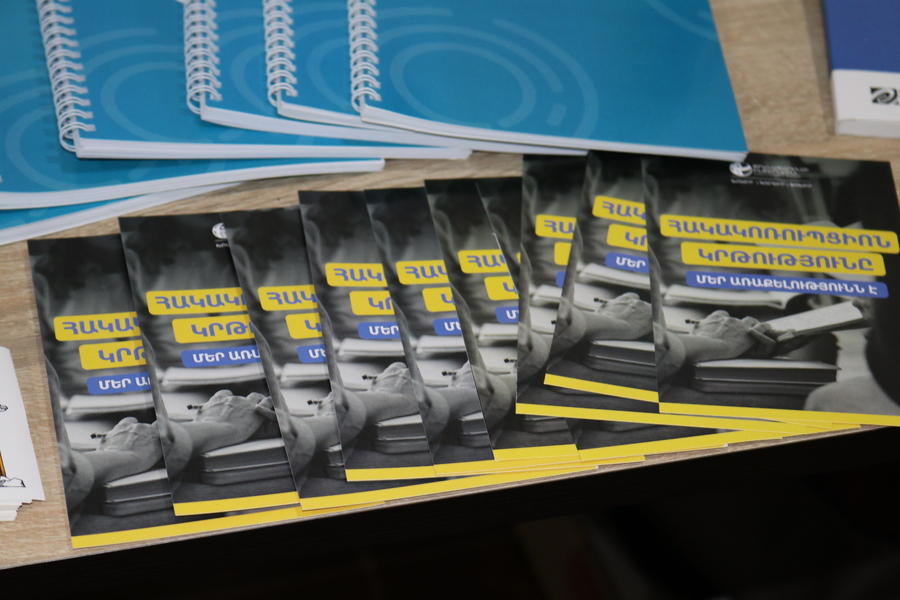Workshop “National Integrity System Assessment of Armenia 2014: What has been changed since 2012?”
On December 16, 2014 Transparency International Anticorruption Center (TIAC) organized a workshop on “National Integrity System Assessment of Armenia 2014: What has been changed since 2012?” in off the record format with interested stakeholders to present the findings of its research and to identify the causes of uncovered weaknesses. The workshop was held in the framework of National Integrity System (NIS) Research (2013-2015) project. The project is funded by the European Union. It is part of the “National Integrity System Assessments in European Neighborhood East Region” regional project, which is coordinated by Transparency International (TI) Secretariat and implemented by TI chapters of the Eastern Partnership countries (except Belarus).
The overall objective of the project is to improve good governance in the Neighborhood East region by reducing corruption. At present the project implementation is in the finalization stage of Armenia’s National Integrity System assessment of 13 pillars (legislature, executive, judiciary, public sector, law enforcement, electoral management body, ombudsman, audit institution, anti-corruption agencies, political parties, media, civil society and business). The project’s methodology implies holding a workshop with the involvement of stakeholders in order to present the findings and weaknesses of the pillars.
Varuzhan Hoktanyan, TIAC Executive Director and Jose Maria Medina Navarro, Deputy Head of Cooperation, Delegation of the European Union to Armenia
welcomed the audience with opening remarks and introduction. Khachik Harutyunyan, TIAC Anticorruption Expert and Lead Researcher of the NIS project presented NIS methodology, NIS concept, results and weaknesses of the pillars.
National Integrity System assessments (NIS) are a series of in-country studies providing an extensive qualitative assessment of the strengths and weaknesses of the key institutions that enable good governance and prevent corruption in a country.





